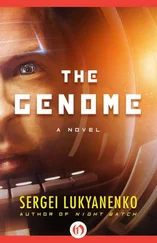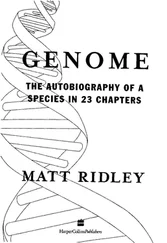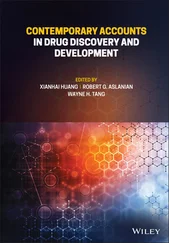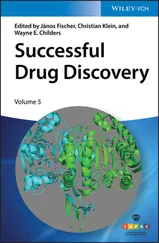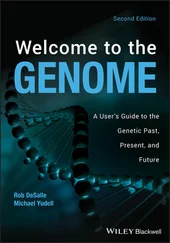Genome Editing in Drug Discovery
Здесь есть возможность читать онлайн «Genome Editing in Drug Discovery» — ознакомительный отрывок электронной книги совершенно бесплатно, а после прочтения отрывка купить полную версию. В некоторых случаях можно слушать аудио, скачать через торрент в формате fb2 и присутствует краткое содержание. Жанр: unrecognised, на английском языке. Описание произведения, (предисловие) а так же отзывы посетителей доступны на портале библиотеки ЛибКат.
- Название:Genome Editing in Drug Discovery
- Автор:
- Жанр:
- Год:неизвестен
- ISBN:нет данных
- Рейтинг книги:5 / 5. Голосов: 1
-
Избранное:Добавить в избранное
- Отзывы:
-
Ваша оценка:
- 100
- 1
- 2
- 3
- 4
- 5
Genome Editing in Drug Discovery: краткое содержание, описание и аннотация
Предлагаем к чтению аннотацию, описание, краткое содержание или предисловие (зависит от того, что написал сам автор книги «Genome Editing in Drug Discovery»). Если вы не нашли необходимую информацию о книге — напишите в комментариях, мы постараемся отыскать её.
A practical guide for researchers and professionals applying genome editing techniques to drug discovery Genome Editing in Drug Discovery,
Genome Editing in Drug Discovery
Genome Editing in Drug Discovery
Genome Editing in Drug Discovery — читать онлайн ознакомительный отрывок
Ниже представлен текст книги, разбитый по страницам. Система сохранения места последней прочитанной страницы, позволяет с удобством читать онлайн бесплатно книгу «Genome Editing in Drug Discovery», без необходимости каждый раз заново искать на чём Вы остановились. Поставьте закладку, и сможете в любой момент перейти на страницу, на которой закончили чтение.
Интервал:
Закладка:
Most of the initial efforts in genome editing using CRISPR‐Cas9 were mainly reproducing targeting strategies previously demonstrated with Zinc Finger Nucleases and TALENs but at the same time obtaining much better efficiency with an easier design. Several groups showed the use of CRISPR‐Cas9 to promote integration by NHEJ and MMEJ. Joung and Liu´s groups showed that Cas9 could be coupled to FokI to increase its specificity (Guilinger et al. 2014; Tsai et al. 2014). Moreover, transient or stable epigenome editing was demonstrated, following the first demonstration of stable epigenome editing using TALENs (Amabile et al. 2016). The efficiency of the system to induce Gene Knock‐Out and Gene Knock‐In has been really impressive and novel strategies to further enrich for these editing events have been developed recently (Agudelo et al. 2017; Li et al. 2021).
The real differentiator between CRISPR‐Cas9 and the other genome editing technologies is the presence of an exposed single‐stranded DNA after Cas9/gRNA‐mediated strand invasion and target binding (Richardson et al. 2016). This presence of ssDNA is a peculiar characteristic of a D‐Loop‐forming enzyme and is at the base of one of the most relevant CRISPR technology, Base Editing (Komor et al. 2016; Gaudelli et al. 2017). The development of Base Editing, the precise DNA repair system that is using Cas9‐recruited Deaminase to target ssDNA (discussed in Chapter 14), further accelerated the applications of Genome Editing to drug discovery and to Therapeutic Genome Editing. In few years, Base Editing and derived technologies have dramatically impacted the field of functional genomics (Hess et al. 2016; Hanna and Doench 2020) and have provided a safer and more precise alternative to HDR or NHEJ‐based DNA editing In vitro (Webber et al. 2019) and In vivo (Chadwick et al. 2017; Carreras et al. 2019).
Liu´s group, the same group that developed base editing, used the peculiar D‐Loop induction of CRISPR‐Cas9 to develop an additional technology named Prime Editing (Anzalone et al. 2020), where a Reverse Transcriptase is fused to Cas9 to prime a gRNA templated editing event. Prime Editing is still in its infancy, but it will probably expand the reach of base editing.
2.8 Conclusions
Genome Editing and particularly the CRISPR‐Cas9‐based technologies had a tremendous impact in the drug discovery field. Despite all the advancements, the field of Genome Editing by CRISPR‐Cas is characterized by in fieri evolution where it is difficult to anticipate the next improvements and applications but certainly the presence of exposed ssDNAs can be used for other enzymatic functions promoting DNA integration, DNA labeling, or DNA regulation. Most of the CRISPR‐Cas technologies are exploiting a common process of “proximology,” i.e. proximal enzymology, that is having a tremendous impact not only in the genome editing field but more broadly in the Drug Discovery and Drug Development field, as exemplified by PROTACs and derivatives (Sakamoto et al. 2001).
References
1 Agudelo, D., Duringer, A., Bozoyan, L. et al. (2017). Marker‐free coselection for CRISPR‐driven genome editing in human cells. Nat. Methods 14: 615–620.
2 Amabile, A., Migliara, A., Capasso, P. et al. (2016). Inheritable silencing of endogenous genes by hit‐and‐run targeted epigenetic editing. Cell 167 (219–232): e14.
3 Anzalone, A.V., Koblan, L.W., and Liu, D.R. (2020). Genome editing with CRISPR‐Cas nucleases, base editors, transposases and prime editors. Nat. Biotechnol. 38: 824–844.
4 Baker, O., Gupta, A., Obst, M. et al. (2016). RAC‐tagging: recombineering and Cas9‐assisted targeting for protein tagging and conditional analyses. Sci. Rep. 6: 25529.
5 Barrangou, R., Fremaux, C., Deveau, H. et al. (2007). CRISPR provides acquired resistance against viruses in prokaryotes. Science 315: 1709–1712.
6 Bhargava, J., Shashikant, C.S., Carr, J.L. et al. (1999). Direct cloning of genomic DNA by recombinogenic targeting method using a yeast‐bacterial shuttle vector, pClasper. Genomics 62: 285–288.
7 Bibikova, M., Carroll, D., Segal, D.J. et al. (2001). Stimulation of homologous recombination through targeted cleavage by chimeric nucleases. Mol. Cell Biol. 21: 289–297.
8 Bibikova, M., Golic, M., Golic, K.G., and Carroll, D. (2002). Targeted chromosomal cleavage and mutagenesis in drosophila using zinc‐finger nucleases. Genetics 161: 1169–1175.
9 Boch, J., Scholze, H., Schornack, S. et al. (2009). Breaking the code of DNA binding specificity of TAL‐Type III effectors. Science 326: 1509–1512.
10 Buerstedde, J.M. and Takeda, S. (1991). Increased ratio of targeted to random integration after transfection of chicken B cell lines. Cell 67: 179–188.
11 Carbery, I.D., Ji, D., Harrington, A. et al. (2010). Targeted genome modification in mice using zinc‐finger nucleases. Genetics 186: 451–459.
12 Carreras, A., Pane, L.S., Nitsch, R. et al. (2019). in vivo genome and base editing of a human PCSK9 knock‐in hypercholesterolemic mouse model. BMC Biol. 17: 4.
13 Cermak, T., Doyle, E.L., Christian, M. et al. (2011). Efficient design and assembly of custom TALEN and other TAL effector‐based constructs for DNA targeting. Nucleic Acids Res. 39: e82.
14 Chadwick, A.C., Wang, X., and Musunuru, K. (2017). in vivo base editing of PCSK9 (proprotein convertase subtilisin/kexin Type 9) as a therapeutic alternative to genome editing. Arterioscler. Thromb. Vasc. Biol. 37: 1741–1747.
15 Chen, F., Pruett‐Miller, S.M., Huang, Y. et al. (2011). High‐frequency genome editing using ssDNA oligonucleotides with zinc‐finger nucleases. Nat. Methods 8: 753–755.
16 Cole‐Strauss, A., Yoon, K., Xiang, Y. et al. (1996). Correction of the mutation responsible for sickle cell anemia by an RNA‐DNA oligonucleotide. Science 273: 1386–1389.
17 Cristea, S., Freyvert, Y., Santiago, Y. et al. (2013). in vivo cleavage of transgene donors promotes nuclease‐mediated targeted integration. Biotechnol. Bioeng. 110: 871–880.
18 Ding, Q., Lee, Y.K., Schaefer, E.A. et al. (2013). A TALEN genome‐editing system for generating human stem cell‐based disease models. Cell Stem Cell 12: 238–251.
19 Doyon, Y., Mccammon, J.M., Miller, J.C. et al. (2008). Heritable targeted gene disruption in zebrafish using designed zinc‐finger nucleases. Nat. Biotechnol. 26: 702–708.
20 Garneau, J.E., Dupuis, M.E., Villion, M. et al. (2010). The CRISPR/Cas bacterial immune system cleaves bacteriophage and plasmid DNA. Nature 468: 67–71.
21 Gaudelli, N.M., Komor, A.C., Rees, H.A. et al. (2017). Programmable base editing of A*T to G*C in genomic DNA without DNA cleavage. Nature 551: 464–471.
22 Geurts, A.M., Cost, G.J., Freyvert, Y. et al. (2009). Knockout rats via embryo microinjection of zinc‐finger nucleases. Science 325: 433.
23 Guilinger, J.P., Thompson, D.B., and Liu, D.R. (2014). Fusion of catalytically inactive Cas9 to FokI nuclease improves the specificity of genome modification. Nat. Biotechnol. 32: 577–582.
24 Hanna, R.E. and Doench, J.G. (2020). Design and analysis of CRISPR‐Cas experiments. Nat. Biotechnol. 38: 813–823.
25 Hess, G.T., Fresard, L., Han, K. et al. (2016). Directed evolution using dCas9‐targeted somatic hypermutation in mammalian cells. Nat. Methods 13: 1036–1042.
26 Hinnen, A., Hicks, J.B., and Fink, G.R. (1978). Transformation of yeast. Proc. Natl. Acad. Sci. U. S. A. 75: 1929–1933.
27 Hirata, R., Chamberlain, J., Dong, R., and Russell, D.W. (2002). Targeted transgene insertion into human chromosomes by adeno‐associated virus vectors. Nat. Biotechnol. 20: 735–738.
28 Ishino, Y., Shinagawa, H., Makino, K. et al. (1987). Nucleotide sequence of the iap gene, responsible for alkaline phosphatase isozyme conversion in escherichia coli, and identification of the gene product. J. Bacteriol. 169: 5429–5433.
Читать дальшеИнтервал:
Закладка:
Похожие книги на «Genome Editing in Drug Discovery»
Представляем Вашему вниманию похожие книги на «Genome Editing in Drug Discovery» списком для выбора. Мы отобрали схожую по названию и смыслу литературу в надежде предоставить читателям больше вариантов отыскать новые, интересные, ещё непрочитанные произведения.
Обсуждение, отзывы о книге «Genome Editing in Drug Discovery» и просто собственные мнения читателей. Оставьте ваши комментарии, напишите, что Вы думаете о произведении, его смысле или главных героях. Укажите что конкретно понравилось, а что нет, и почему Вы так считаете.

